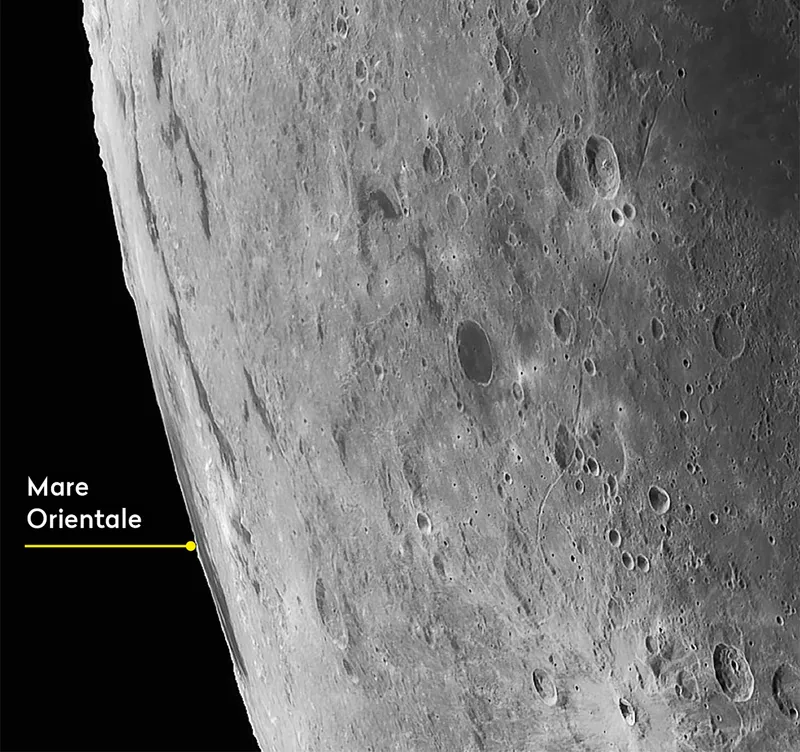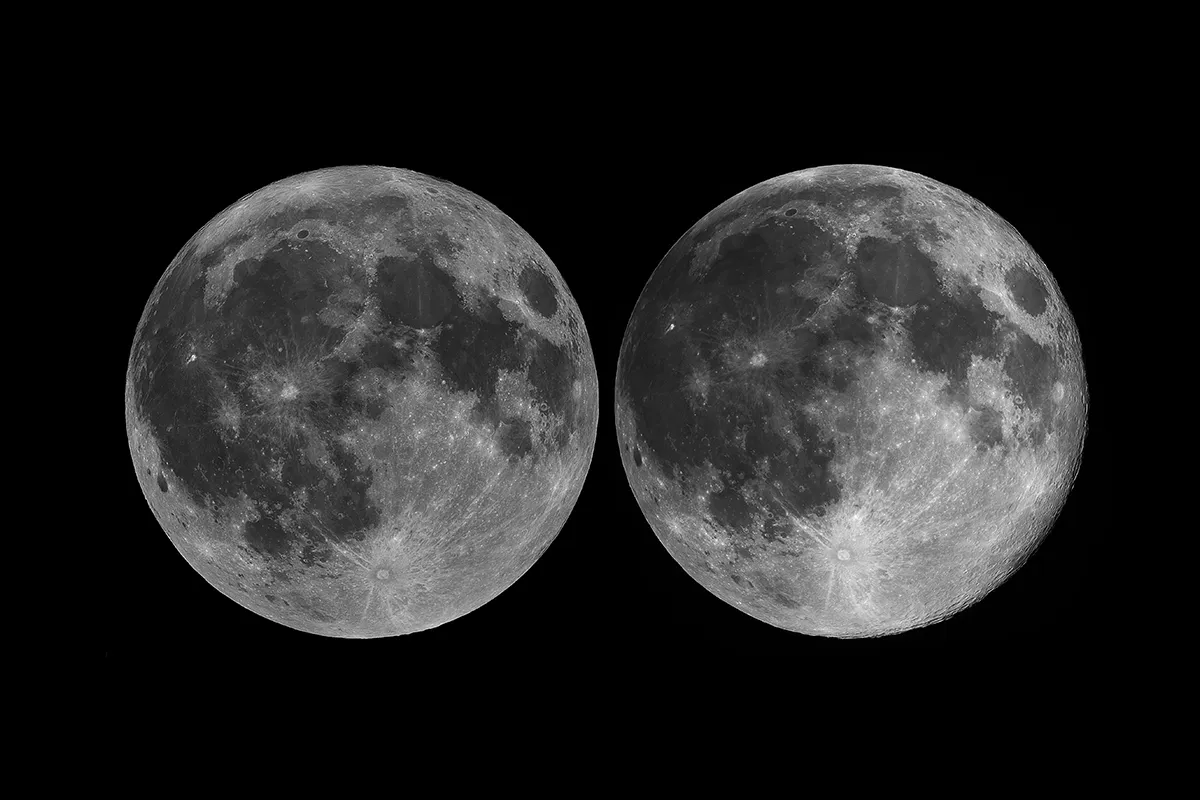Mare Orientale is the name given to a 300km-diameter lunar sea very close to the Moon’s southwest limb as seen from Earth.
The basin comprises the sea plus a series of concentric mountain ranges, the outermost of which has a diameter of 920km.
Seen from above, the central Mare Orientale plus its surrounding mountain rings appear like a giant bull’s eye.
Smaller patches of dark lava fill in some areas between the concentric ranges.
Discover our pick of the best features to observe on the Moon and lesser known features on the Moon

Lunar libration
The Moon presents us with the same familiar face, but orbital effects cause it to appear to rock and roll slightly over time.
These effects are collectively called libration and for features such as Orientale on the Moon’s edge, libration can either hide them from us or give us a better view.
On certain dates, libration moves Orientale and its surroundings into an Earth-friendly position.

Observing Mare Orientale
Mare Orientale is a tricky feature to decode as its structures appear heavily foreshortened.
Features to look for inlcude the eastern peaks of the outer Montes Cordillera, as well as peaks of the inner Montes Rook range.
Also look out for some of the darker lava patches.
The larger examples have been given names such as Lacus Veris and Lacus Autumni.
The holy grail is to try to see the inner lava of Mare Orientale itself, but don’t expect this region of the Moon to be an easy catch!
Labelled diagram
Below is a labelled diagram indicating some of the features you may be able to spot.

Have you managed to observe or even photograph it? Let us know by emailing contactus@skyatnightmagazine.com
